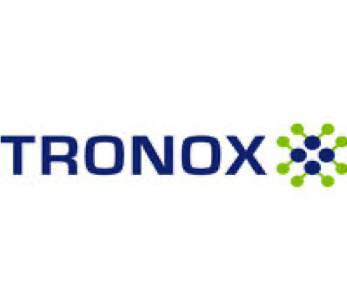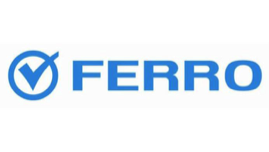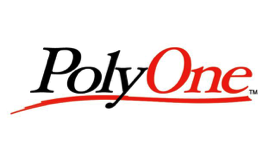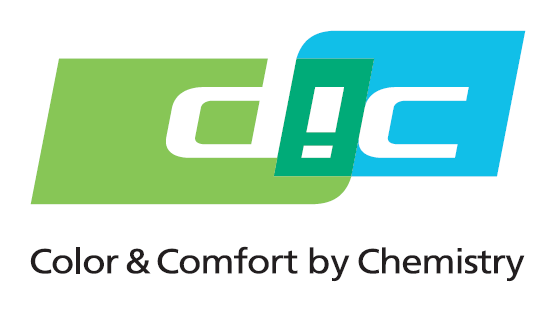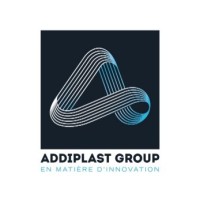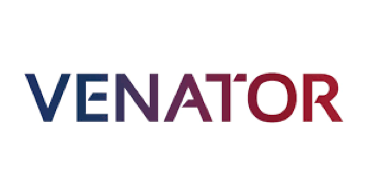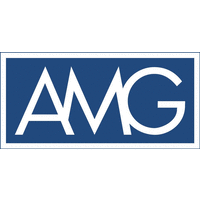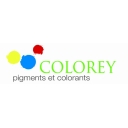Summary
The global colorants and pigments market has seen a resurgence in activity in recent years, with companies in the sector seeing sales increase by more than 7% between 2019 and 2020. Despite a significant drop in activity, the French colorants and pigments market has rebounded, with 2020 activity up 18.8%. The global market is expected to grow from $33 billion to $49 billion by 2027, with an average annual growth rate of 5%, driven by demand in the textile, paints and coatings, construction and plastics sectors, particularly in Asia, where countries such as China account for a significant share of production.
French manufacturers focus on specific segments and face challenges from Asian competitors, but trends in favor of natural and recycled ingredients are having a positive influence on the sector. Regulations such as the REACH and Seveso directives are shaping the market, while the COVID-19 directive has had mixed effects, but is expected to return to normal by 2021. The market is made up of major international players and specialized French SMEs, who are engaged in strategies such as R&D for eco-responsible products, mergers and acquisitions, and responding to the growing demand for natural, environmentally-friendly products.
Demand for colorants and pigments on the French market
Demand for colorants and pigments on the contemporary French market has undergone significant changes over the past two decades. The industry, generally facing a decline since the early 2000s due to fierce competition from Asia, has begun to show signs of recovery in recent years. In particular, there has been substantial annual growth of around 3.5%. The value of the market in 2020 has been estimated at around 1.09 billion euros, excluding VAT.
Several industries drive demand for colorants and pigments in France, and their performance has a direct impact on the sector. These include paints and varnishes, inks, plastics, paper and cardboard, and textiles. Demand from these industries varies, with some sectors growing and others declining due to global trends and local factors, such as the COVID-19 pandemic. The paint and varnish industry performed strongly, suggesting a positive outlook for pigment and colorant manufacturers supplying this segment. Similarly, production of plastic products generally saw a slight annual increase of around 1.6%, albeit with a decline, indicating fluctuating demand in this market segment. By contrast, paper and cardboard production slowed in 2020 due to the pandemic, falling by 7.6% in value and 5.3% in volume after a period of growth. Textile production in France is recovering, with activity up by around 7.3%. This recovery indicates a revival in demand for dyes in the textile industry. Trends in other textile items such as blankets, household linen and other textile furnishing items have seen significant increases in activity in recent years, which could broaden the market for specialty dyes.
French demand for dyes and pigments is part of a wider European context, in which Germany, Italy, Spain and the UK are key players. This trend underlines the importance of maintaining strong business relationships, particularly with German industrial partners, in order to capitalize on neighboring European markets.
Key players in the colorants and pigments market : A diverse landscape of global influencers and French specialists
The global colorants and pigments market is a dynamic arena, populated by a variety of influential companies with a strong international presence, as well as specialist French companies making significant inroads into the industry.
International giants with interests in France
- BASF: German chemical giant BASF maintains a formidable presence in the global colorants and pigments market. With a versatile portfolio and a strong focus on research and innovation, BASF is recognized for its commitment to producing high-quality products while focusing on sustainability.
- DIC Corporation: Originally from Japan, DIC Corporation is a leading figure in the pigment industry. Its strategic acquisitions, including the takeover of BASF's pigment business, have strengthened the company's position and enabled it to gain a foothold in various markets, including France.
- Venator: American titan of the sector, Venator operates several production sites in France. The company's vast product catalog meets the needs of a wide range of sectors, underlining its influence worldwide.
- AMG (Advanced Metallurgical Group): The Dutch group's activities in France contribute to the dynamism of the country's pigments and dyes market. AMG's presence in France underlines its commitment to serving the European market with high-quality products.
- PolyOne: Now known as Avient Corporation, this American conglomerate is present in the French market. The company is known for its customer-centric approach, offering customized solutions across the full range of colors and materials.
- Tronox: Another American heavyweight, Tronox, has a major titanium dioxide production site in France. The company's innovative approach places it at the forefront of the industry, with a focus on ecological and sustainable practices.
- Ferro: Ferro, an American company, is characterized by a diversified offering in the colorants and pigments sector. Its commitment to quality and performance makes it a trusted name among industrial users.
French specialists make their mark
- Groupe Addiplast: The flagship of French expertise, Groupe Addiplast is asserting itself through strategic acquisitions, such as Toyo Ink Europe Specialty Chemicals. The company is aiming for ambitious growth by exploring new markets and focusing on recycled and biobased materials.
- Colorey: This French competitor focuses on the production of a range of colored solutions for various industrial applications.
to understand this market
Detailed content
 Inforamtion
Inforamtion
- Number of pages : 30 pages
- Format : Digital and PDF versions
- Last update : 06/02/2024
 Summary and extracts
Summary and extracts
1 Market overview
1.1 Definition and scope of study
Dyes and pigments are two different substances used in a variety of industries: food, cosmetics, textiles and purely industrial. These substances are used to impart a new color.
A distinction must be made between colorants and pigments. Dyes are soluble and need to be carefully ground. They can be found in the food, chemical, plastics, cosmetics, leather and textile industries.
Pigments, on the other hand, are insoluble. They are ground, dispersed and applied to the surface of the material to be colored. They can be found in cosmetics, inks, paint, plastics, coatings, glass, concrete and ceramics.
due to competition from Asian countries, the activity of colorant and pigment manufacturers has been in sharp decline since the early 2000s. However, growth has returned in recent years. The main players include major international groups such as DIC, Tronox and Ferro. French companies are smaller, specializing in specific segments.
Estimated at $38.2 billion in 2022, the market could well reach $57.3 billion in 2030, recording a CAGR of 5.3%.
On a French scale, the sector saw a slight drop in activity in 2023, following two years of significant growth.
1.2 The global colorants and pigments market
The global market for pigments and colorants is set to grow at a steady pace over the coming years. Estimated at $**.* billion in ****, Grand View Research forecasts that it will reach $**.* billion in ****, recording a CAGR of *.*%. This growth will be fuelled by growing demand in the textiles, paints and coatings, ...
1.3 French market trends
The trend in activity since the ****s highlights the overall decline in activity over the last ** years, for both the domestic and export markets. This decline is particularly marked between **** and ****: activity was *.** times higher in France in **** than in ****.
Business trends for colorant and pigment manufacturers France, **** - ****, index base ...
1.4 Foreign trade in dyes and pigments
The code used in this section is ****, which covers "inorganic or mineral coloring matter, n.e.s.preparations based on inorganic or mineral coloring matter, of a kind used for coloring any material or intended to be used as ingredients in the manufacture of coloring preparationsparations (***); inorganic products of a kind ...
2 Demand analysis
2.1 Paint, varnish and ink: key demand drivers
Paint, varnish and ink are very common applications for colorants and pigments. The activity of colorant and pigment manufacturers in France therefore depends on various sectors, such as the building and civil engineering industry and the automotive sector.
Insee groups under NAF code **.**Z the manufacture of paints, varnishes, inks and ...
2.2 Textiles: driving demand in the dyes and pigments market
The textile industry suffered greatly from Asian competition at the start of the XXIᵉ century: the **** level being *.** times lower than in ****.
Trend in textile industry sales France, ****-****, in billions of euros Source: ****
The textile industry has seen moderate growth in sales (***) over the period from **** to ****. Starting with a ...
2.3 Plastics: another major market outlet
With annual sales of over *** billion euros, the plastics industry is a key factor in the growth of the colorants and pigments market. [***]
the main demand countries for plastics in Europe are Germany (***). Hence the importance for pigment and colorant manufacturers of forging relationships with German industrial partners in particular.
Plastics ...
2.4 Paper and board production trends in France
Growth in the French corrugated board industry halted by the Covid-** crisis:
The corrugated board industry France, **** - ****, in billions of € and millions of tons Source: ****
The plastics industry saw its value and volume decline between **** and ****, from *,*** to *,*** and from *.** to *.* respectively. This represents a drop of *.*% in value and ...
3 Market structure
3.1 Colorants and pigments industry value chain
Source: ****
3.2 Number of establishments and employees in the sector
The number of establishments manufacturing colorants and pigments in France is fairly low, reflecting a relatively undeveloped industrial fabric that has been in decline for some ten years. This is mainly due to international competition.
Number of colorant and pigment manufacturers (***) France, ****-****, in number of companies and employees Source: ****
Between ...
3.3 Geographical breakdown of the industry
With ** companies registered under NAF code **.**Z, the Auvergne - Rhône - Alpes region is a major player in the sector, followed by the northern regions of France.
The region's proximity to Germany is an important factor, as there are many industrial outlets there.
Source: ****
3.4 Strategy and dynamism
The French pigments and dyes market features two types of players:
*/ Major international groups present in France via various subsidiaries
Venator, an American group, has two production sites in France AMG (***), a Dutch group, has a plant in France PolyOne, American group Tronox, American group BASF, German group specialized in ...
4 Offer analysis
4.1 Product typology
The manufacture of dyes and pigments is covered by NAF code **.**Z. This code covers the following products:
**.**.** - Zinc oxides and peroxides; titanium oxides- **.**.** - Chromium, manganese, lead and copper oxides and hydroxides- **.**.** - Other metal oxides, peroxides and hydroxides- **.**.** - Synthetic organic colorants and preparations based thereon; synthetic ...
4.2 Price trends
Between **** and ****, there will be an overall increase in the Producer Price Index - all markets combined.
Producer price indices (***) in industry for the French market measure changes in transaction prices, excluding VAT, of goods produced by industry and sold on the French market.
Producer price index, Dyes, pigments and tanning ...
4.3 Supply trends: towards "natural" and eco-responsible colorants
The rise of natural food coloring :
Fermantalg is a French biotech specializing in microalgae for nutrition and health. The company is partly owned by the Japanese group Dic: together, the two companies aim to develop natural food colorants by developing an innovative "phycocyanin" (***).
In ****, phycocyanine represented a market worth *** million euros ...
5 Regulations
5.1 Current regulations
REACH regulations (***)
European regulation ****/**** aims to protect against the risks associated with the circulation of chemicals on European territory. The regulation sets out a timetable for the registration, classification and evaluation of over **,*** substances. The regulation also sets fees to be paid according to the substances used and their quantities. It ...
6 Positioning the players
6.1 Player segmentation
- Tronox Mic Thann France
- Ferro
- AVIENT (ex PolyOne)
- BASF
- DIC Corporation
- Addiplast Group
- Venator Pigments
- AMG (Advanced Metallurgical Group)
- Colorey
 List of charts
List of charts
- Global market value for colorants and pigments
- Business trends for colorant and pigment manufacturers
- Estimated sales for colorant and pigment manufacturers
- Number of colorant and pigment manufacturers (code 20.12)
- Workforce trends in colorant and pigment manufacturing
All our studies are available online in PDF format
Take a look at an example of our research on another market!
Latest news
Companies quoted in this study
This study contains a complete overview of the companies in the market, with the latest figures and news for each company. :
 Choosing this study means :
Choosing this study means :
Access to more than 35 hours of work
Our studies are the result of over 35 hours of research and analysis. Using our studies allows you to devote more time and added value to your projects.
Benefit from 6 years' experience and over 1,500 industry reports already produced
Our expertise enables us to produce comprehensive studies in all sectors, including niche and emerging markets.
Our know-how and methodology enable us to produce reports that offer unique value for money.
Access to several thousand articles and paid-for data
Businesscoot has access to all the paid economic press as well as exclusive databases to carry out its market research (over 30,000 articles and private sources).
To enhance our research, our analysts also use web indicators (semrush, trends, etc.) to identify market trends and company strategies. (Consult our paying sources)
Guaranteed support after your purchase
A team dedicated to after-sales service, to guarantee you a high level of satisfaction. +44 238 097 0676
A digital format designed for our users
Not only do you have access to a PDF, but also to a digital version designed for our customers. This version gives you access to sources, data in Excel format and graphics. The content of the study can therefore be easily retrieved and adapted for your specific needs.
 Our offers :
Our offers :
the market for dyes and pigments | France
- What are the figures on the size and growth of the market?
- What is driving the growth of the market and its evolution?
- What is the positioning of companies in the value chain?
- Data from several dozen databases
Pack 5 études (-15%) France
- 5 études au prix de 75,6€HT par étude à choisir parmi nos 800 titres sur le catalogue France pendant 12 mois
- Conservez -15% sur les études supplémentaires achetées
- Choisissez le remboursement des crédits non consommés au terme des 12 mois (durée du pack)
Consultez les conditions du pack et de remboursement des crédits non consommés.





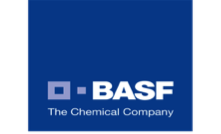 BASF: the Ludwigshafen giant sinks into crisis - 22/01/2024
BASF: the Ludwigshafen giant sinks into crisis - 22/01/2024
